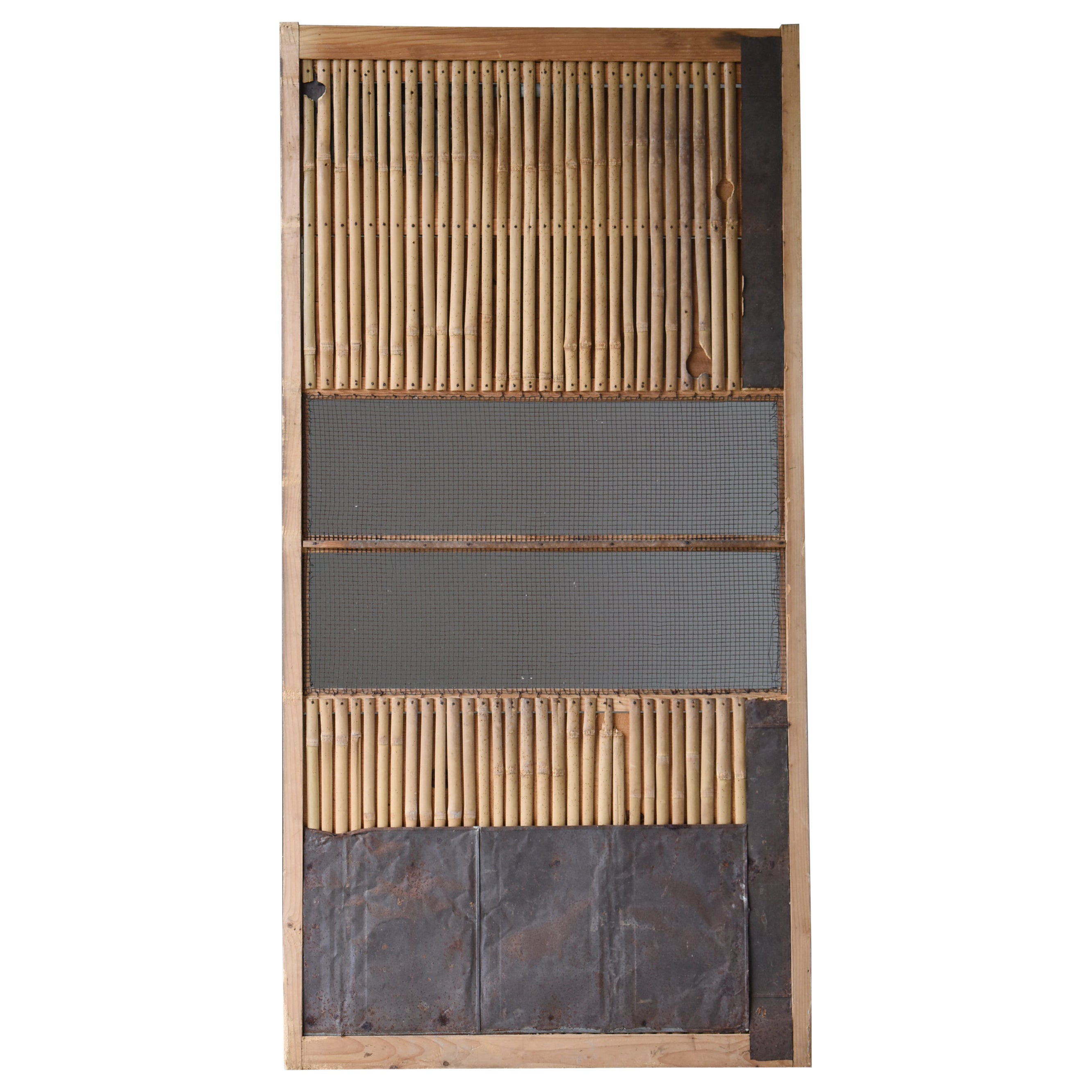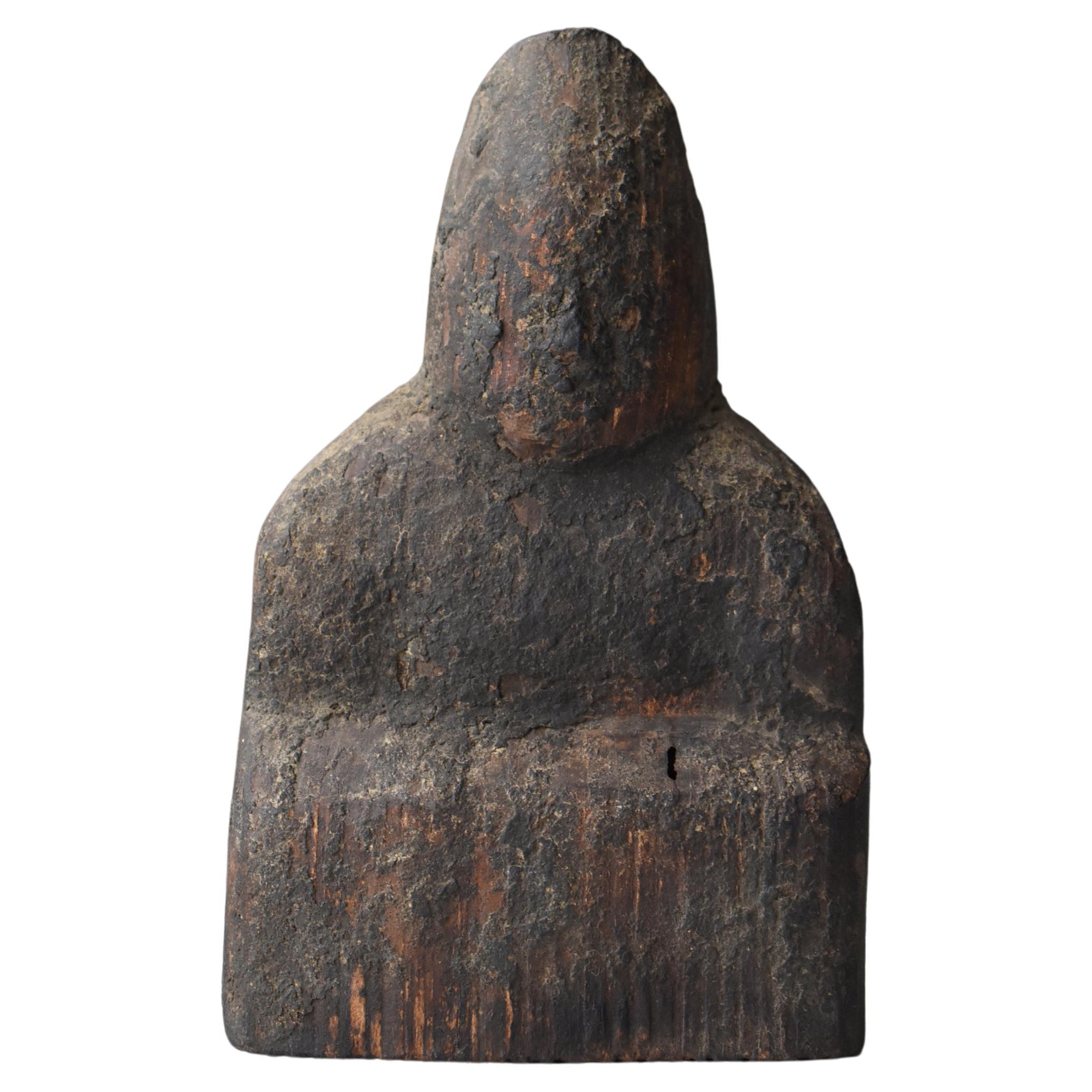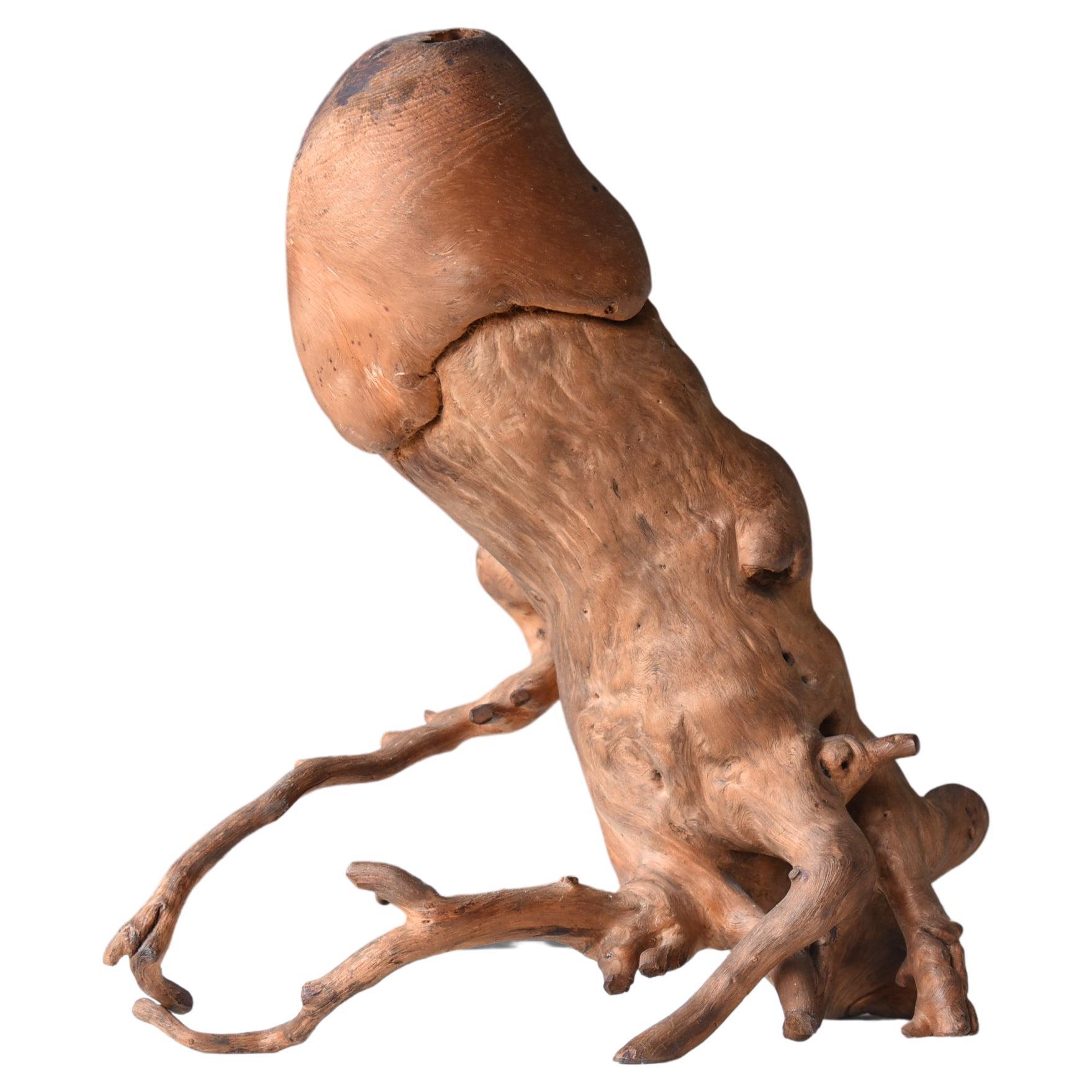Items Similar to Japanese Antique Wood Carving "Hotei" 1860s-1900s / Buddha Statue Wabi Sabi
Want more images or videos?
Request additional images or videos from the seller
1 of 11
Japanese Antique Wood Carving "Hotei" 1860s-1900s / Buddha Statue Wabi Sabi
About the Item
This is a very old Japanese "Hotei" wood carving.
It is a wood carving from the Meiji period (1860s-1900s).
Unique item made from a tree trunk.
Hotei (birth year unknown), a legendary Buddhist monk who is said to have existed.
Considered a favorite subject of ink and wash paintings, he is depicted as a drum-bellied monk carrying a large sack on his back.
In Japan, he is worshipped as one of the Seven Gods of Good Fortune.
This rare wood carving represents the Japanese style.
Weight: 7 kg.
About the Seller
5.0
Platinum Seller
These expertly vetted sellers are 1stDibs' most experienced sellers and are rated highest by our customers.
Established in 2015
1stDibs seller since 2020
1,105 sales on 1stDibs
Typical response time: 4 hours
- ShippingRetrieving quote...Ships From: Choseigun, Japan
- Return PolicyA return for this item may be initiated within 7 days of delivery.
Auctions on 1stDibs
Our timed auctions are an opportunity to bid on extraordinary design. We do not charge a Buyer's Premium and shipping is facilitated by 1stDibs and/or the seller. Plus, all auction purchases are covered by our comprehensive Buyer Protection. Learn More
More From This SellerView All
- Japanese Antique Wood Carving Monkey 1860s-1900s / Figurine Sculpture Wabi SabiLocated in Sammu-shi, ChibaThis is a very old Japanese wood carving of a monkey. It is a wood carving from the Meiji period (1860s-1900s). It appears to be carved from cedar wood. "Monkey holding a peach" Pea...Category
Mid-20th Century Japanese Meiji Sculptures and Carvings
MaterialsCedar
- Japanese Antique Wood Carving Daruma 1860s-1900s / Sculpture Mingei Wabi SabiLocated in Sammu-shi, ChibaThis is a very old wooden Daruma doll. It was made during the Meiji period (1860s-1900s). The material is cedar wood. A wooden model of Daruma doll. Many Daruma dolls were mass-prod...Category
Early 20th Century Japanese Meiji Sculptures and Carvings
MaterialsCedar
- Japanese Antique Stone Daruma 1860s-1900s / Stone Carving Figurine Wabi SabiLocated in Sammu-shi, ChibaThis is a very old Japanese stone Daruma doll. This Daruma doll dates from the Meiji period (1860s-1900s). Daruma was a Buddhist monk who introduced Buddh...Category
Early 20th Century Japanese Meiji Sculptures and Carvings
MaterialsStone
- Japanese Antique Wood Carving Heavenly God 1800s-1860s / Figurine Wabi SabiLocated in Sammu-shi, ChibaThis is a very old Japanese wood carving of a god. It is called "Tenjin. Tenjin" is a general term for "a god who lives in heaven. This wood carving dates from the Edo period (1...Category
Antique Late 19th Century Japanese Edo Sculptures and Carvings
MaterialsCedar
- Japanese Antique Chicken Object 1860s-1900s / Animal Sculpture Wabi SabiLocated in Sammu-shi, ChibaThis is a very old Japanese chicken figurine. It is from the Meiji period (1860s-1900s). The body is made of paper, the beak of wood, and the legs ...Category
Early 20th Century Japanese Meiji Sculptures and Carvings
MaterialsWood, Paper
- Japanese Antique Tree root Penis 1860s-1900s / figurine Mingei Wabi SabiLocated in Sammu-shi, ChibaThis is a natural wood in the shape of an old Japanese penis. It is extremely rare. It is believed to have been collected during the Meiji period (1860...Category
Early 20th Century Japanese Meiji Sculptures and Carvings
MaterialsWood
You May Also Like
- Japanese Antique Gilt Wood Amitabha Buddha on Loctus Throne StatueLocated in Atlanta, GAA Japanese carved wood Amitabha (Amida) Buddha statue with residual gold leafed surface circa 19th century (late Edo period). The buddha is seated in the padmasana position on an elevated double lotus throne, under a small lotus halo canopy. His right hand is held in abhaya mudra which means fearlessness in Sanskrit. The mudra symbolizes protection, peace, and fearless. His left hand gently resting on his thigh. Dressed in a flowing robe with open chest, the statue showcases a classic iconography found prominently in Japanese Buddhism art during Edo to Meiji period, characterized by the double lotus throne and a particularly serene meditative facial expression, highlighted by inset gemstones...Category
Antique 19th Century Japanese Edo Sculptures and Carvings
MaterialsGold Leaf
- Japanese Tree Segment Wabi Sabi Wood SculptureLocated in Douglas Manor, NY3-175 Segment of a branch from a cypress tree set on a steped wood base wood base 7.5 x 7.5"Category
Vintage 1920s Japanese Sculptures and Carvings
MaterialsHardwood
- Japanese Wood and Stone Wabi Sabi SculptureLocated in Stamford, CTJapanese wood root and stone Wabi Sabi - "The Acceptance of Transience & Imperfection" sculpture. From Kyoto, Japan. Possibly earlier than 19th cen...Category
Antique Late 19th Century Japanese Sculptures and Carvings
MaterialsStone
- Japanese Pair Wabi Sabi Cedar Wood SculpturesLocated in Douglas Manor, NY1496 Pair Wabi Sabi Cedar wood sculpturesCategory
Vintage 1940s Sculptures and Carvings
MaterialsHardwood
- Japanese Antique Wooden Board Art Single Board Grain of wood 1860s Wabi-SabiLocated in Chiba-Shi, JPThis is an old Japanese wooden board. It is a single board with beautiful wood grain. I think it was probably the top of an exhibition stand. It was already in this state when I fou...Category
Antique 1860s Japanese Edo Antiquities
MaterialsWood
- Japanese Burl Wood Abstract Dog Figure Sculpture Wabi SabiLocated in Douglas Manor, NY3-1089 Japanese ancient burl wood abstract dog sculpture Wabi Sabi.Category
Antique Early 1900s Sculptures and Carvings
MaterialsHardwood
Recently Viewed
View AllMore Ways To Browse
Rare Wood
Wood Carvings
Wood Furniture Japan
Wood Japanese Furniture
Antique Wood Carving
Wood Used In Japanese Furniture
Japanese Art Wood
Antique Wood Carvings
Japanese Wood Objects
Antique Japan Wood
Japanese Antique Wood
Japan Wabi
Japanese Wabi
Japanese Sabi
Japan Wabi Sabi
Japanes Wabi Sabi
Japanese Wabi Sabi
Japanese Antique Wood Furniture





